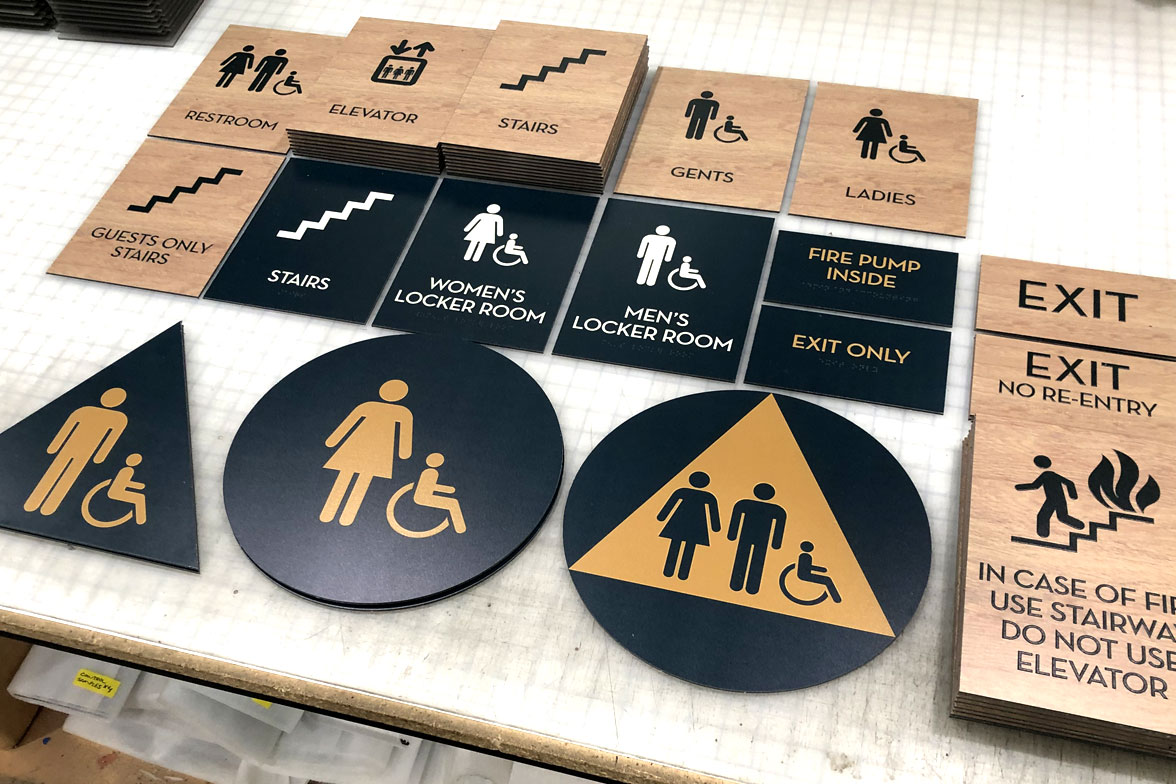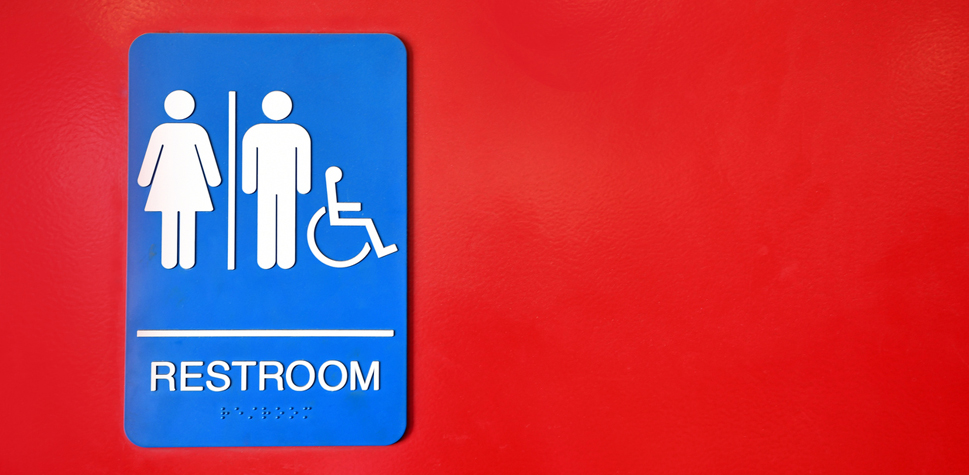Checking Out Innovative Styles for Efficient ADA Signs
Checking Out Innovative Styles for Efficient ADA Signs
Blog Article
ADA Signage: Making Sure Access and Conformity in Public Spaces
ADA signs plays an important function in ensuring access and conformity within public rooms, substantially adding to a comprehensive environment for individuals with disabilities. By sticking to ADA standards, signage not just assists in navigating but additionally emphasizes an organization's devotion to diversity and equality. As we explore the subtleties of ADA signs, from tactile functions to make ins and outs, it's vital to think about just how these components integrate to promote the rights of all customers. What are the typical mistakes companies face in keeping compliance, and exactly how can future trends in signs continue to drive availability ahead?
Value of ADA Signs
In contemporary society, the relevance of ADA signs prolongs beyond simple conformity with lawful requireds to personify a commitment to inclusivity and access for all people. These indicators are vital in producing environments where people with handicaps can browse public areas with the very same simplicity and independence as those without specials needs. By providing clear and standard details, ADA signs guarantees that everybody can access facilities, solutions, and information without barriers.
The significance of ADA signs lies in its capacity to enhance the lifestyle for individuals with specials needs by promoting equal access. It gets rid of the challenges that may otherwise prevent their capacity to get involved totally in neighborhood life. These indicators serve as noticeable signs of an organization's devotion to variety and equal rights, mirroring broader societal worths that champion the rights and self-respect of all individuals.
Additionally, ADA signage plays a vital duty in public safety and security. By assisting individuals to departures, restrooms, and other essential facilities, it makes sure that all people, no matter physical ability, can evacuate securely throughout emergency situations. In summary, ADA signage is not simply a regulatory requirement yet a powerful device for fostering a inclusive and fair society.
Key Aspects of Conformity

Positioning is vital; signs need to be mounted in locations that are reachable and conveniently visible. Typically, signage needs to be installed in between 48 and 60 inches from the ground to make certain accessibility for both standing and wheelchair customers. Tactile aspects, such as Braille, are necessary for individuals with visual disabilities, supplying critical information in a non-visual style.
High-contrast colors between the text and background are needed to boost readability for individuals with low vision. The ADA mandates specific contrast ratios to make certain quality. Additionally, character size is an essential consideration, with minimum height needs determined by the viewing distance to guarantee readability from numerous angles.
Design Factors To Consider for Availability
Designing obtainable signs requires a precise approach to ensure it meets the requirements of all individuals, particularly those with handicaps. This involves taking into consideration various layout elements that boost readability and functionality. Trick elements consist of the option of font, shade contrast, and responsive functions. Fonts ought to be sans-serif, with clear and easy letterforms, to facilitate simple reading. The dimension of the text is just as important, with ADA guidelines advising a minimum height based upon viewing distance to make certain legibility.
Contrasting shades between text and history are essential for visibility, especially for people with visual disabilities. A high comparison proportion helps distinguish the text from its history, boosting readability under various illumination problems. In addition, responsive elements, such as Braille and raised personalities, are crucial for people that are blind or have reduced vision. These components need to be situated from this source at a regular elevation and placement to make certain easy access and understanding.
Moreover, the positioning of signage plays a considerable function in access. Signs ought to be mounted in places that are easily obtainable and unhampered. Making certain that signs is placed at ideal heights and angles enables all users, consisting of those using wheelchairs, to connect with them effectively.
Typical Mistakes to Prevent

Another prevalent mistake is the inaccurate placement of signage. ADA guidelines specify precise height and area needs to make certain that indicators are reachable and quickly noticeable by all individuals, including those making use of mobility devices. Ignoring these standards not just hampers availability but additionally runs the risk of non-compliance with lawful standards.
In addition, insufficient comparison between text and background is a regular oversight. Adequate comparison is important for readability, specifically for people with low vision. Designers occasionally select shades that are visually attractive but lack the necessary comparison, Website providing the text tough to discern.
Finally, some developers fail to integrate tactile components, such as Braille, which are important for people who are blind. Leaving out these functions not only causes non-compliance with ADA regulations however also limits gain access to for a section of the population that counts on responsive details.
Future Trends in Signage
Advancements in innovation and boosting recognition of inclusivity are forming the future fads in signs layout. As society comes to be extra mindful of varied needs, the integration of smart technologies into signage is acquiring traction. Digital signage, as an example, is evolving to consist of interactive attributes and real-time updates, which can be crucial in providing vibrant details in public areas. These indications frequently incorporate touch screens or gesture-based controls, making it possible for customers to browse material tailored to their specific needs.
An additional emerging fad is the use of augmented fact (AR) to enhance customer experience. AR-enabled signage can overlay electronic information onto the physical setting, offering aesthetically impaired individuals with auditory or haptic responses. ADA Signs. This innovation not just enhances access however additionally creates an interesting experience for all users
Sustainability is likewise a significant variable influencing signage fads. Environment-friendly materials and energy-efficient illumination solutions are being focused on to align with worldwide ecological goals. Additionally, advancements in materials scientific research are leading to the growth of more weather-resistant and sturdy signs.
Conclusion
ADA signage plays a crucial duty in assuring availability and conformity within public rooms by including responsive components, high-contrast shades, and strategic placement. The adherence to ADA standards not only helps with secure navigation for people with specials needs yet likewise represents a company's dedication to diversity and inclusivity. By staying clear of typical errors and welcoming future fads, public areas can remain to advance these values, guaranteeing that the rights and dignity of all people are valued and promoted.
ADA signs plays an essential role in guaranteeing accessibility and conformity within public see this page areas, substantially contributing to an inclusive setting for people with specials needs. As we check out the nuances of ADA signs, from responsive functions to design intricacies, it's crucial to take into consideration just how these aspects coalesce to promote the legal rights of all users.In modern-day culture, the importance of ADA signage expands beyond mere conformity with lawful mandates to personify a dedication to inclusivity and ease of access for all people. By giving clear and standard information, ADA signage makes certain that everybody can access facilities, services, and info without barriers.
ADA signs plays a crucial function in guaranteeing access and compliance within public rooms by integrating responsive elements, high-contrast shades, and tactical positioning. (ADA Signs)
Report this page